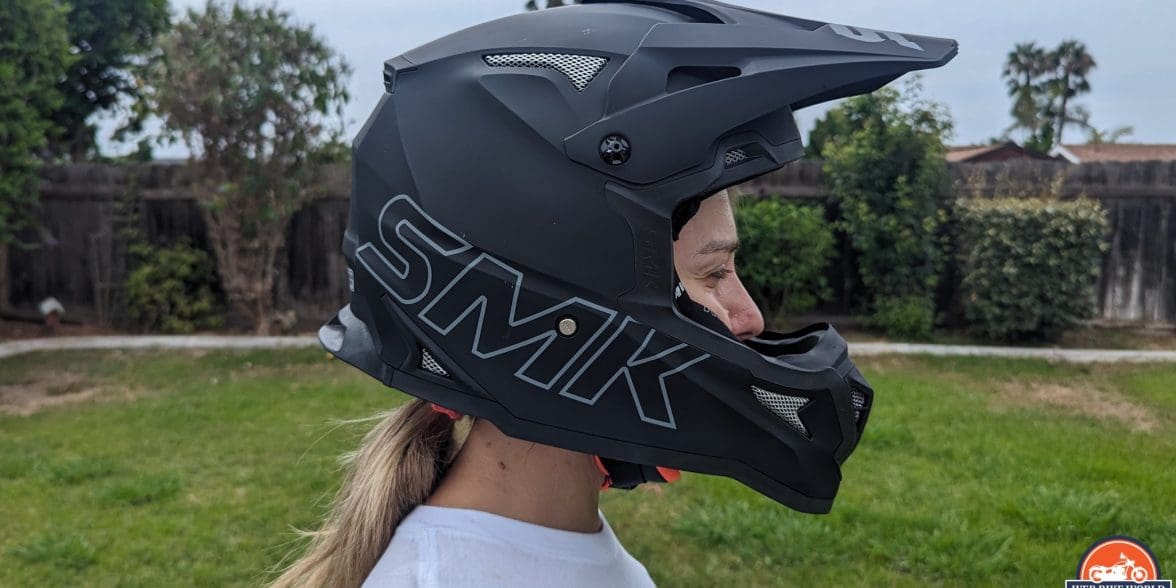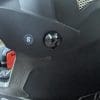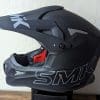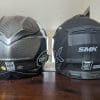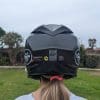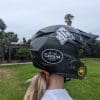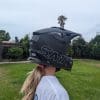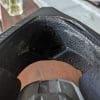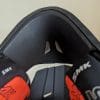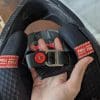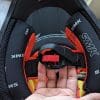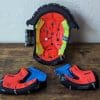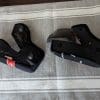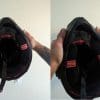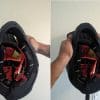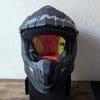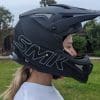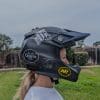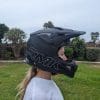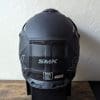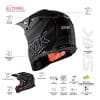Review Summary
- At $130 USD, SMK’s Allterra helmet is budget-friendly, making it an attractive option for consumers who are mindful of their wallets.
- The helmet excels in providing excellent ventilation, ensuring that wearers stay comfortable and sweat-free. It also has a manageable weight that makes it easy to wear and carry.
- The helmet can stand to have some improved safety features such as the inclusion of EMT emergency straps and improving the durability of the shell material.
- While DOT and ECE certified, the SMK shell is much more malleable compared to other helmets in the segment such as the Bell Spherical 10. A redesign to include better strength-to-weight ratio would be of benefit.
The SMK Brand
SMK stands for Sidhartha Madhu Khurana, a brand of their parent Studds Accessories, first established in 1973. This up-and-coming brand specializes in helmets designed in Italy but manufactured in India. They ship globally and are looking to expand as they feature helmets in every disciple of riding. Though relatively new to the U.S. market, this brand has distributed over seven million helmets in the last five decades. They may have started in a garage in India, but they’re now in production with the best.
Small in start but big in heart, let’s see how this grassroots company fairs for the off-road with their Allterra helmet against tried and true Spherical 10 by Bell.
Everything is Relative
Though we’ve dug up an evened-out list of goodies from what the Allterra offers, we did want to keep things objective that we are still comparing two completely different brands. However, Knowing that Bell is a seasoned fighter in the octagon of gear, I didn’t pick it to bury SMK but to compare what they are competing within the U.S. market, and that’s a favorite. Seeing the similarities excites me for the Allterra, and the difference made it an excellent source for new opportunities to level up in the trade.
We also want to recognize that the price range for each helmet varies greatly and we can reasonably say the features do too. SMK prices their off-road helmet at 129.99$ and the Bell at a whopping 850.00$. That said, SMK claims their helmets still encompass everything their competition does with quality, safety, comfort, and design but on a budget. So let’s enter the octagon and see if it does.
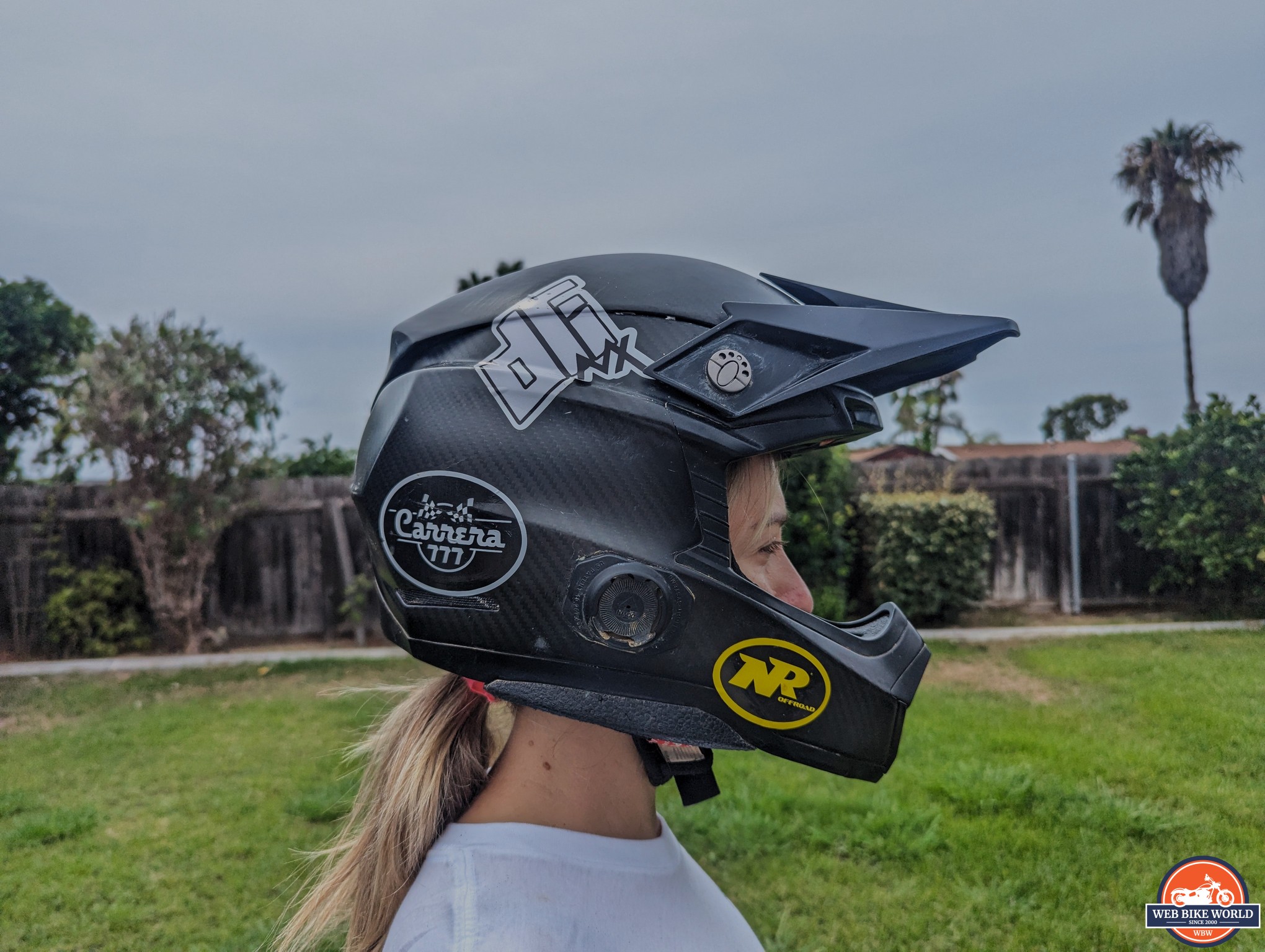
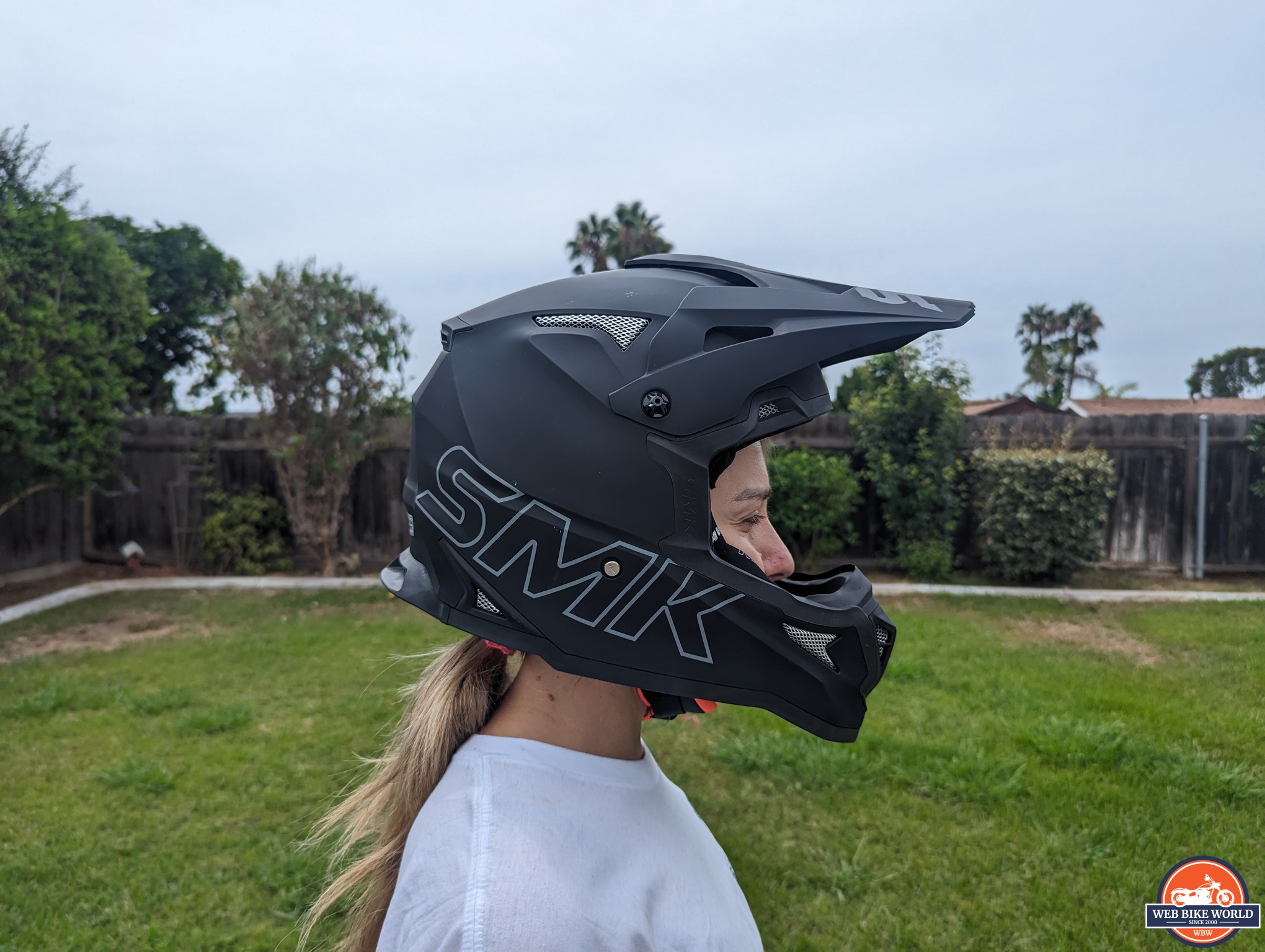
Out Of The Box Impressions
From first unpacking this helmet looks eerily familiar. Almost too much. Looking back at my Bell to the SMK, the lines are similar, and the matte is virtually indistinguishable except for the large name branded in bold and screaming at you across the sides. It was incognito until I glimpsed the inside and got screamed at some more with the traffic cone of colors in the lining. Holy marketing fire. The neon was enough to light up a bowling alley.
But it was so LIGHT. So easy to hold and held handsome, clean lines that made it look like a motocross helmet anyone could wear.
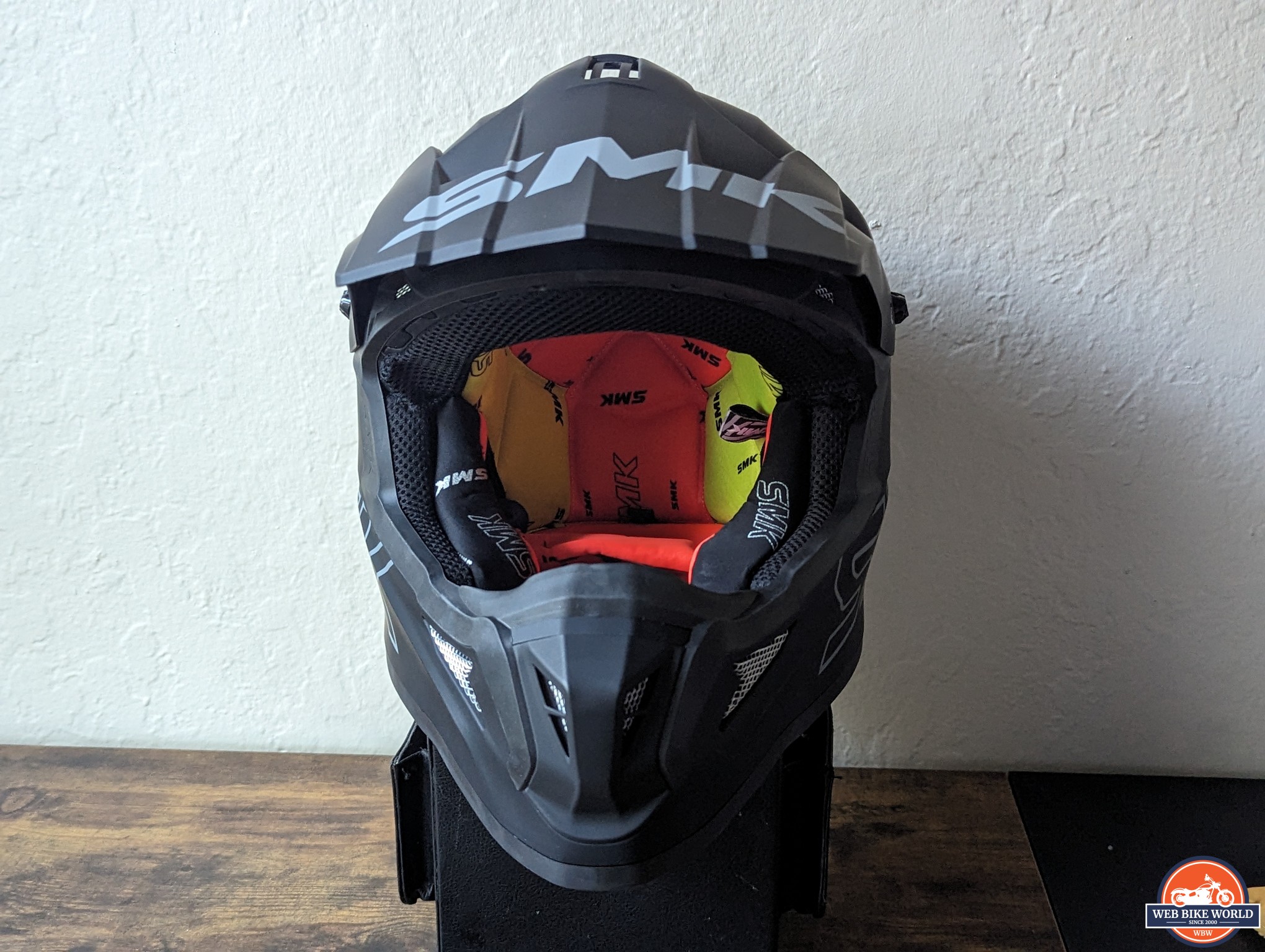
My Bell had neutral colors on the lining and the shell. All are streamlined to a sleek dark look. Not sure why the highlight colors were needed, but maybe it helped to find them in the wash since they’re removable for cleaning.
Sizing and Fit
I struggled in getting my fit with them since my 55.5cm head was apparently in between sizes? Their website listed me closer to medium but I ended up exchanging for a small. SMK also offered different-sized liners that help with fit, but It would also be helpful if their website listed their helmet shapes as more circular or oval to account for dimensions.
The small fit was much more comfortable and the exchange through their Chicago office was speedy. In comparison, the Bell was smaller, and I had to size up. The Allterra comes in six different sizes.
Information for helpful sizing can be found in the picture below and on their website, Sizing support.
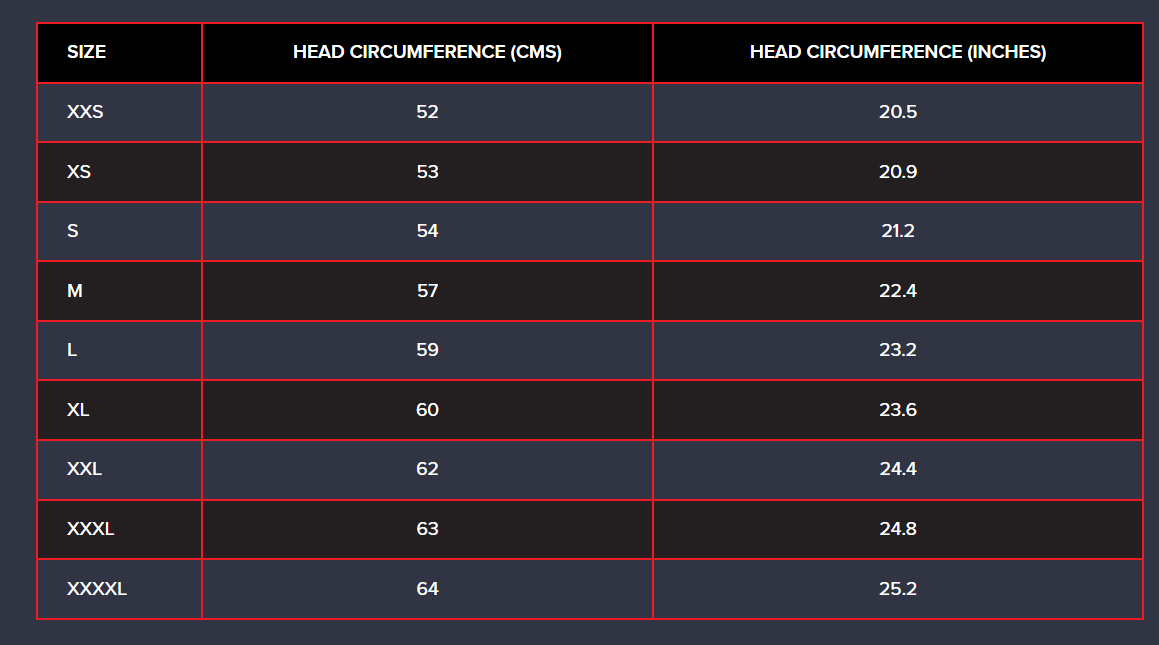
Weight
Coming in at 1350 grams, the SMK is just about three pounds (2.97). So it didn’t just feel light. It is actually a very light helmet. Riding-wise, I noticed it because it was like a featherlight shell around my ears. Anyone with neck issues knows this is always a game-changer.
Realizing that the Bell comes in at 3.64 pounds, that extra half pound does make a difference during long distances. We also need to consider the shell composition that comes into play with that. The more we use the heavier the helmet, but sometimes the safer as well. With the SMK, though, having a lightweight income, accessible helmet helps new riders feel comfortable in their helmets and wallets.
Shell
The Allterra has a shell described to have two outer shell layers injected with Energy Impact Resistant Thermoplastics (EIRT) engineered to absorb and disperse energy upon impact, reducing the force transmitted to the protected object, I.E., your noggin.
Sounds legitimate but is it?
Impressively, DOT and ECE say it is. It means it meets safety regulations to be sold in the U.S. and Europe.
DOT sets criteria for helmet performance in three areas: impact attenuation, penetration resistance, and chin strap retention effectiveness. They are more common but don’t do certain additional testing like the Snell.
The Spherical 10 a SNELL certified Bell helmet. SNELL test criteria are given government-set standards to deliver excellent protection and are not a requirement. They have additional testing like the Dynamic Retention. The Dynamic retention test id done in addition to the common roll-off test. Here, they have falling weights to test whether or not a helmet will pop off of a rider’s head when met with a sudden force. This is interesting as later you’ll hear how I hit a branch during my testing.
DOT and Snell both offer Impact Analysis testing and use accelerometers to determine how fast the helmet stops moving during the impact test, but their standards differ. The DOT allows up to 400Gs of peak acceleration while the Snell standards only allow up to 275Gs. Comparatively, the Allterra one has DOT testing and doesn’t have the 3k carbon Fiber of the spherical 10. But it also never will for this level of a price tag. The more carbon fiber the bigger the price tag. Which could be to include more testing.
Regardless, you want to pick your helmet based on the features you want, the price point, and whether or not they meet they meet set safety standards. The Alterra’s DOT backing is a happy sight but If you’re interested in the Snell standard as well, there are plenty of helmets out there that meet both.
Here’s an example of both helmets on the malleability of their shells. The first image we see is the Allterra being stressed against its shell. The second we see is the Bell.
The Allterra noticeably sounded like a cracked glowstick under pressure.
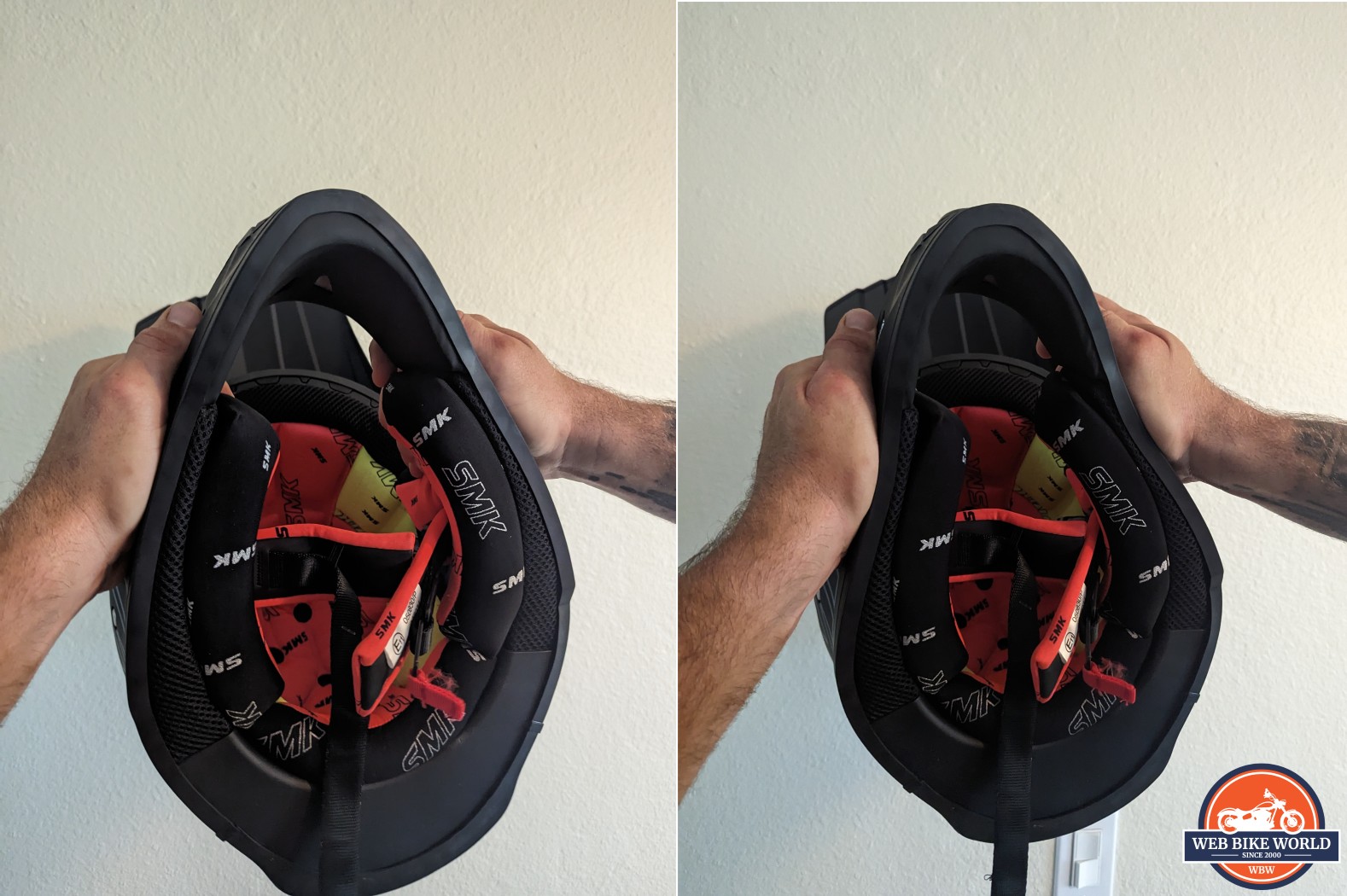
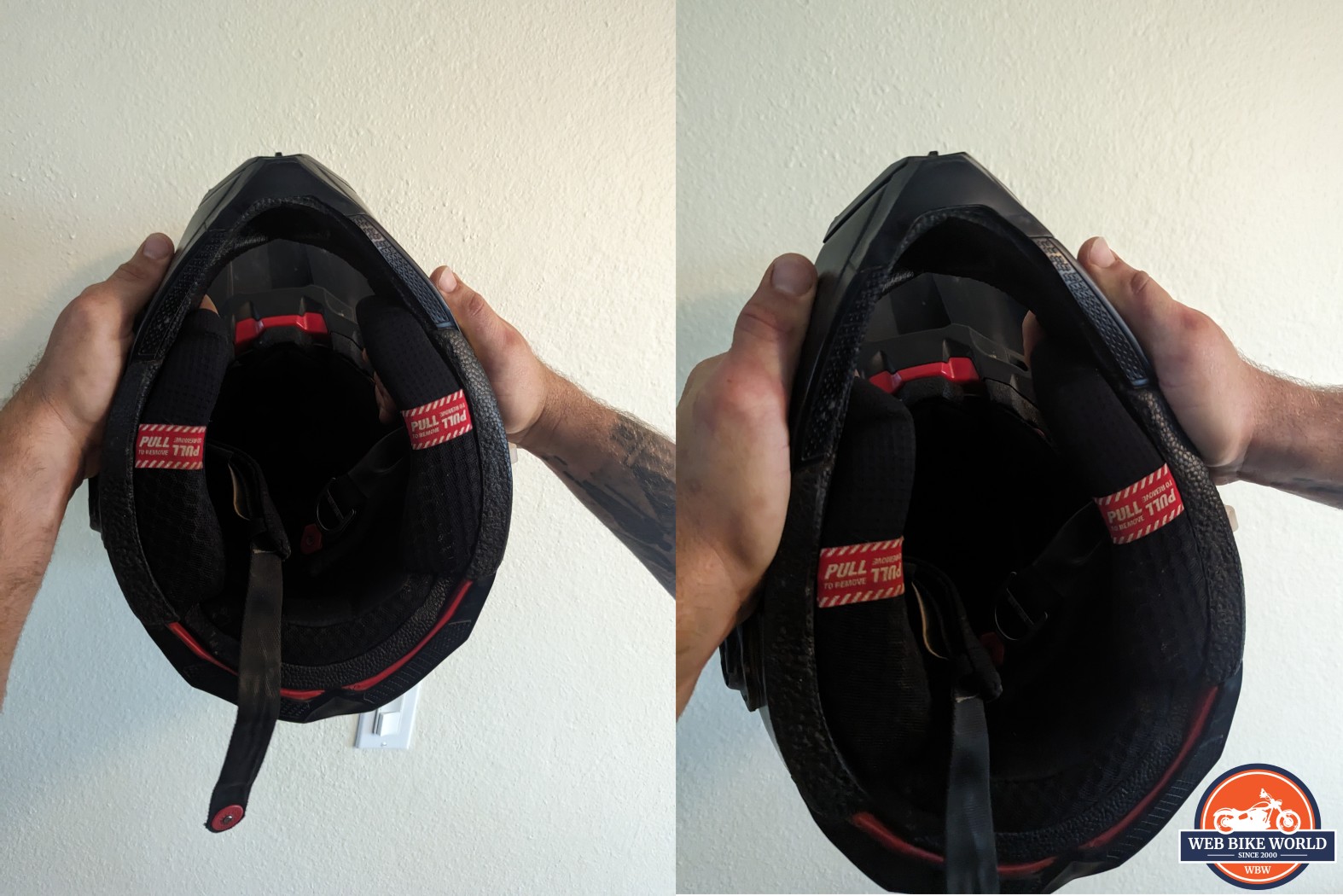
Liner
Looking through this kaleidoscope of hi-viz liners, I noticed that what the Allterra lacked in subtle coloring, it made up for in easy disassembling. The liners snapped off quickly and made me value their snug fit when the cheek pads were snapped back in—solid contact and helpful for an easy changeup. The bell features a quickly connectable use of magnetic snaps for its liners. They are even more accessible to guild into a helmet and always come in contact with their designated slots. Though it changes the game in price, it would be a great feature to help beef up the Allterra.
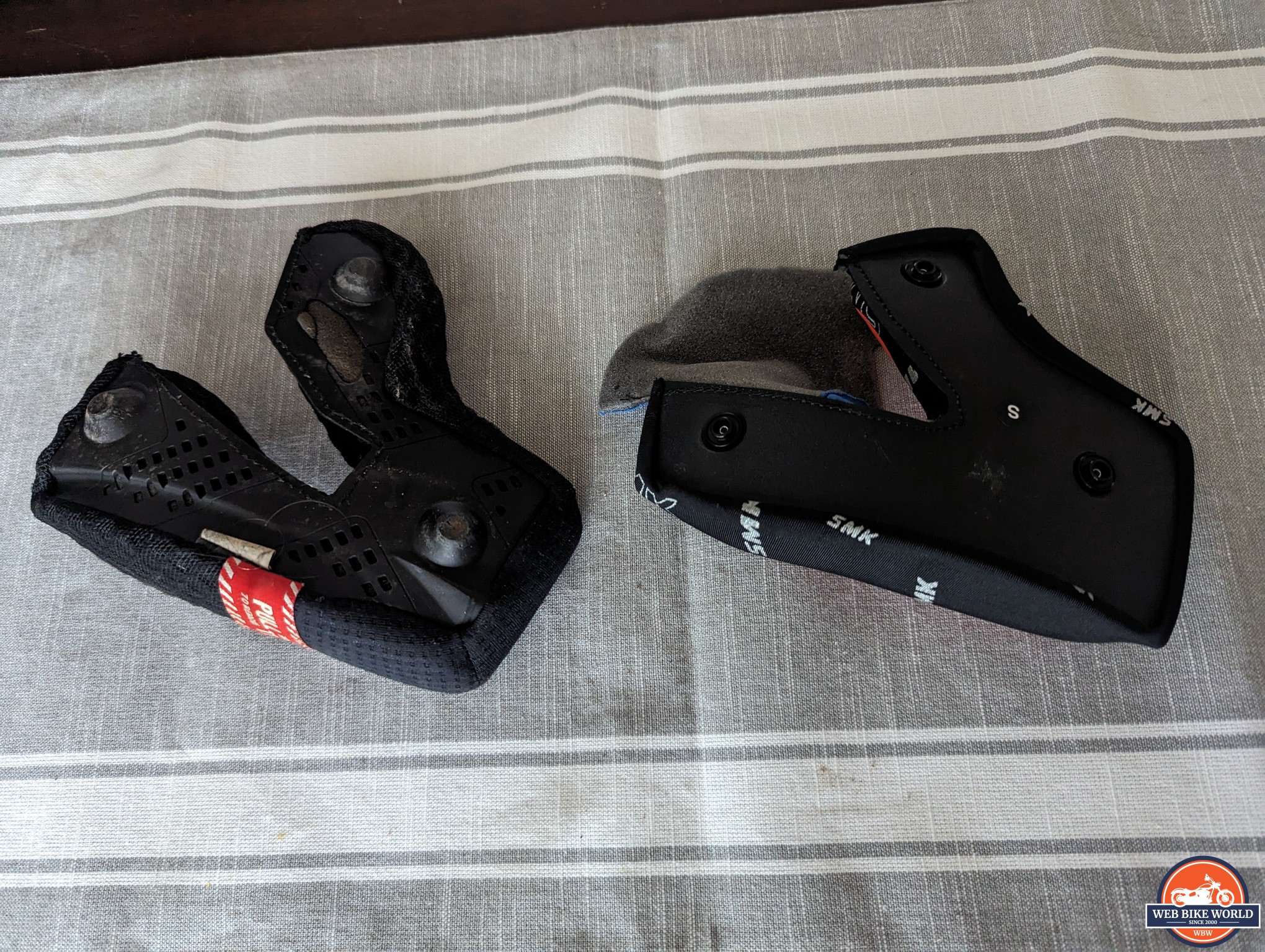
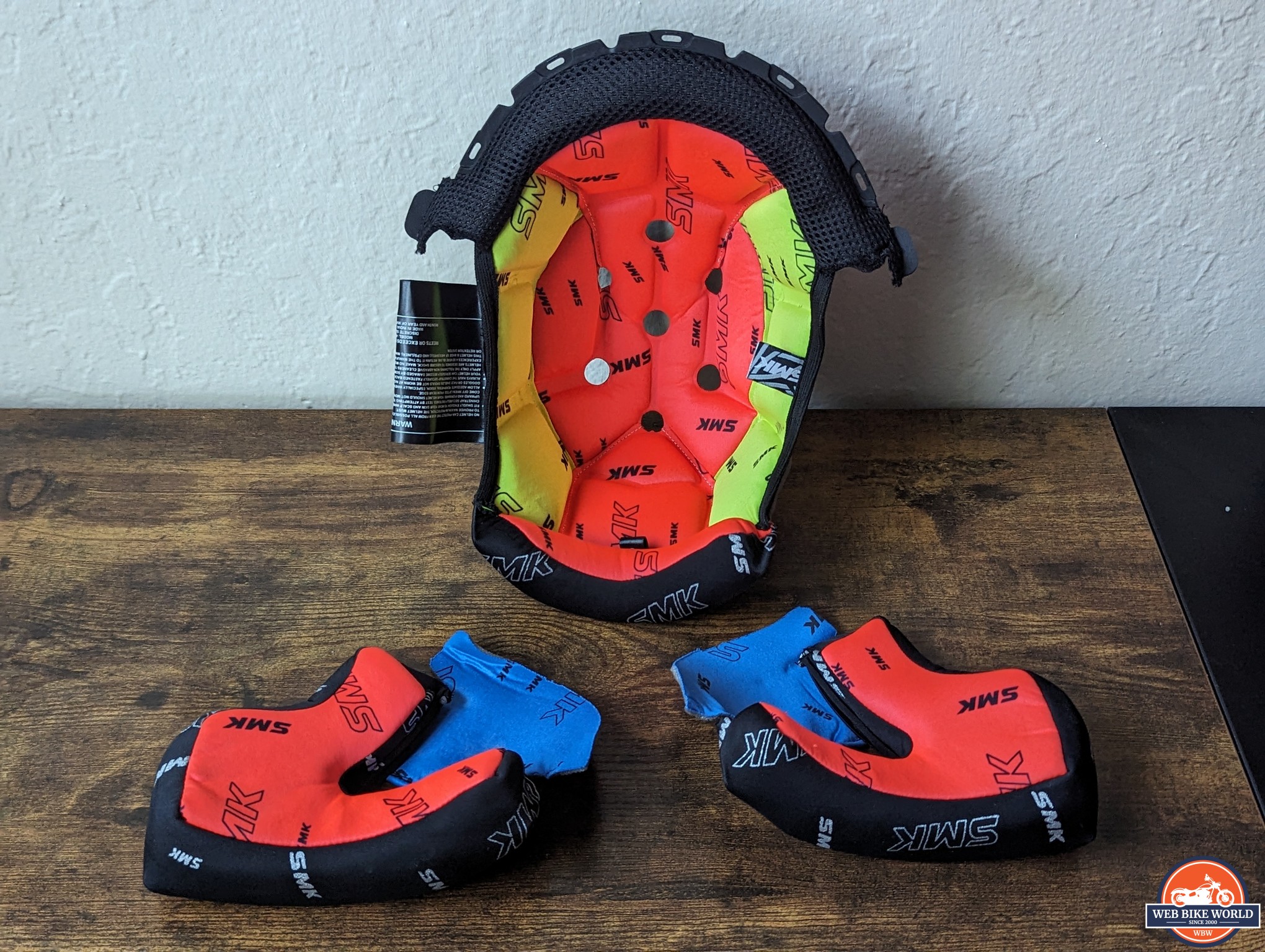
Though the multi-colored comfort liner left something to be desired, it was hypoallergenic. It did provide a comfortable fit with the foam, but it wasn’t as moisture-wicking as I would have liked. The material felt thin and, at times, chafing. It didn’t feel interwoven enough to have a smooth consistency but rather a dense one. The shape and assembly work for an entry-level helmet, but the material could use some work.
The Bell has additional materials like recycled jade to help with comfort and cooling. It also features emergency straps on the pads for first responders to take pieces out more quickly. The material can wait to save cost and keep the Allterra affordable, but the emergency straps are something I feel would be needed to account for the risk of riding.
Chin Strap
I liked that SMK included a magnetic double D-ring chin strap to their helmet. It feels way more luxurious not to have to clip it in but know you’ll have a magnet to help guide your hands. I feel like this was a nice touch on their end; however, the execution of the size and strength of the magnet could have gone a bit better. It was still an excellent design for a simple budget.
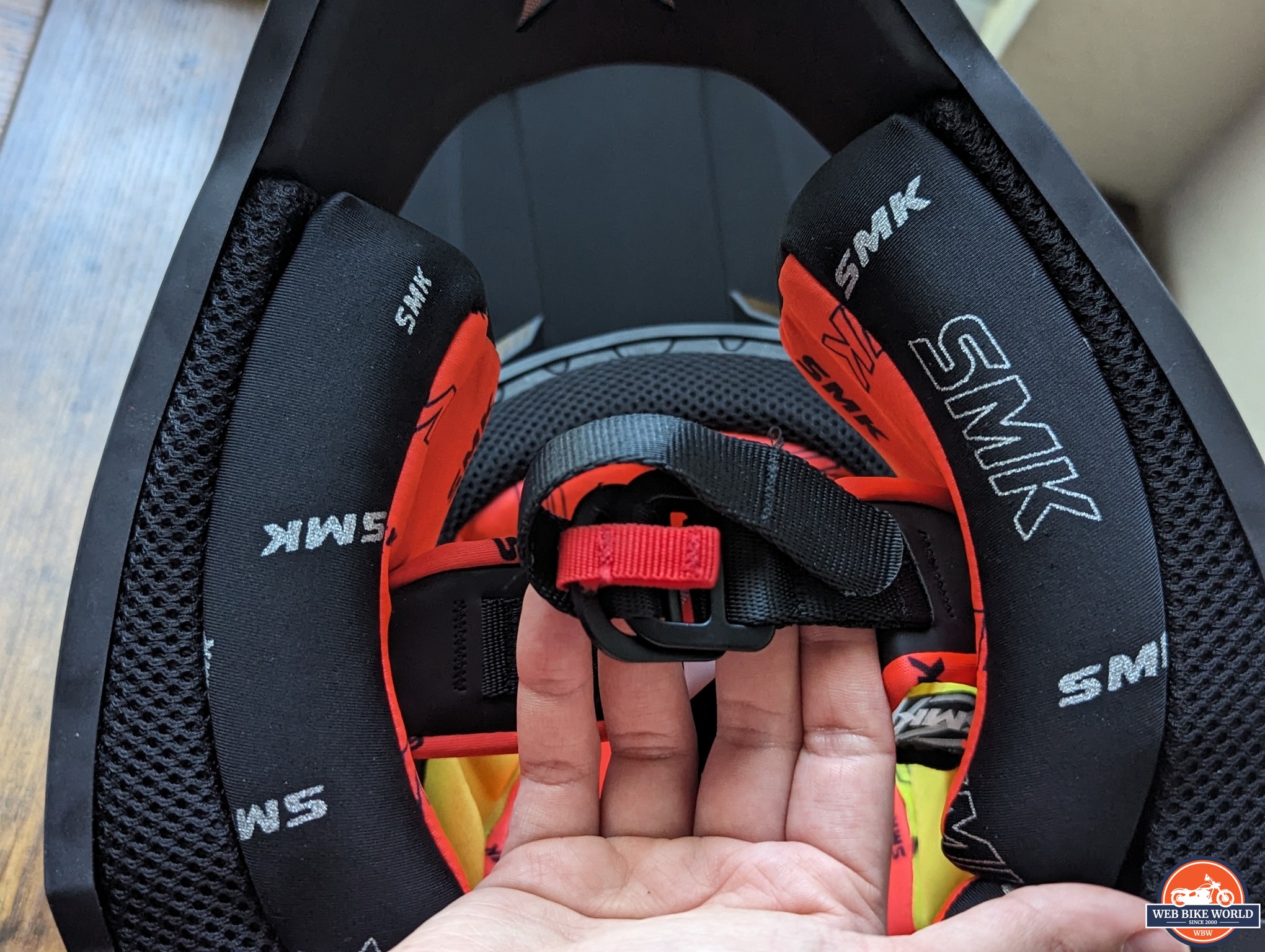
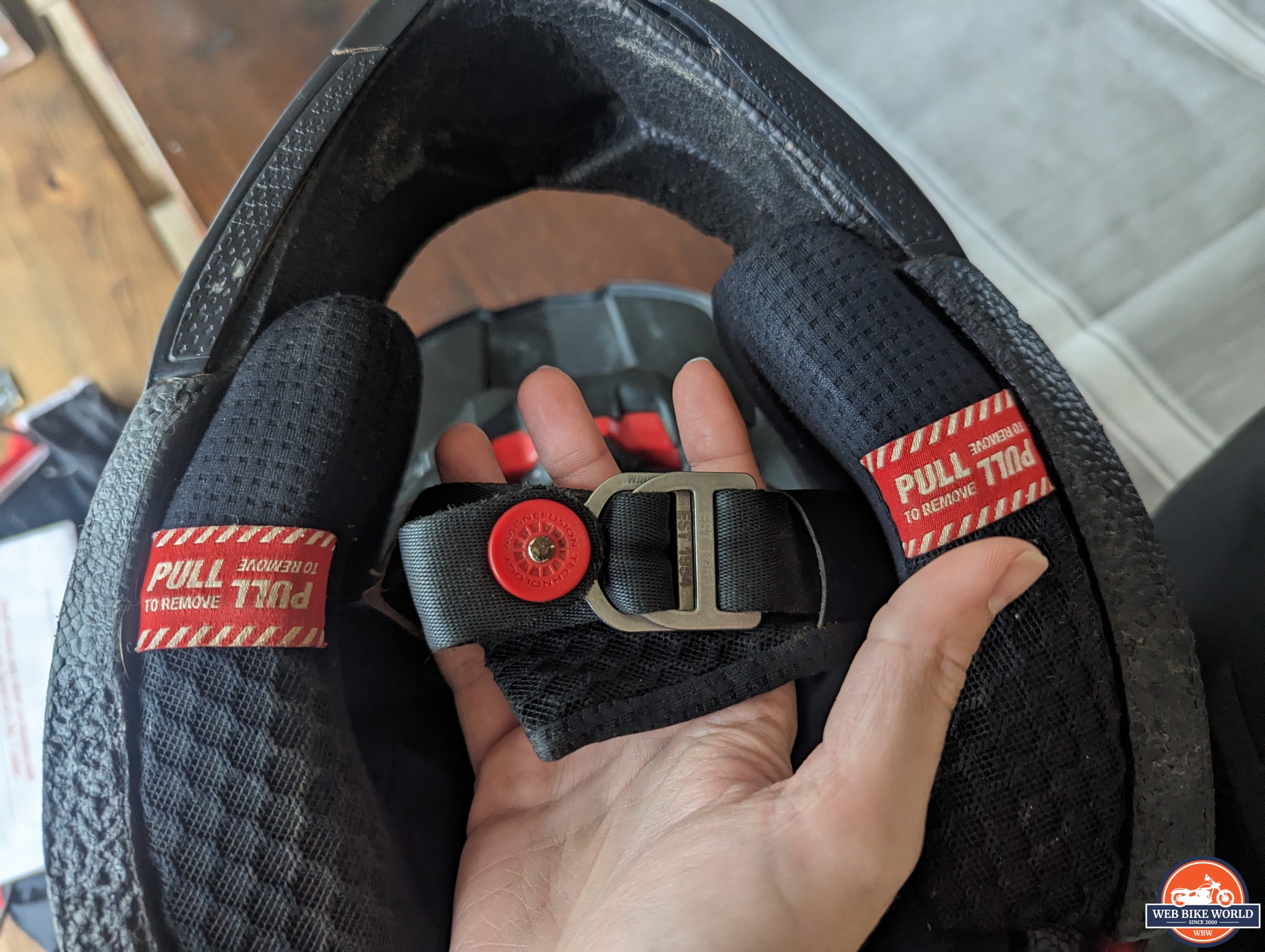
Ventilation
This is an area I feel like the Allterra did shine in. It was an extremely light helmet and very successful at keeping a scalp sweater like me cool on a hot day. It never felt stuffy or like I had sweat building in any area.
The helmet is built with twelve different vents, all targeting areas from the temple and the chin to the base of the neck, and uses channeled exhausts to help hot air dissipate faster and cool and come in more efficiently while riding. For a helmet that is less than my electric bill, that is pretty good. To stay cool in an MX helmet means you can ride smarter and longer, giving new riders a great product under a budget.
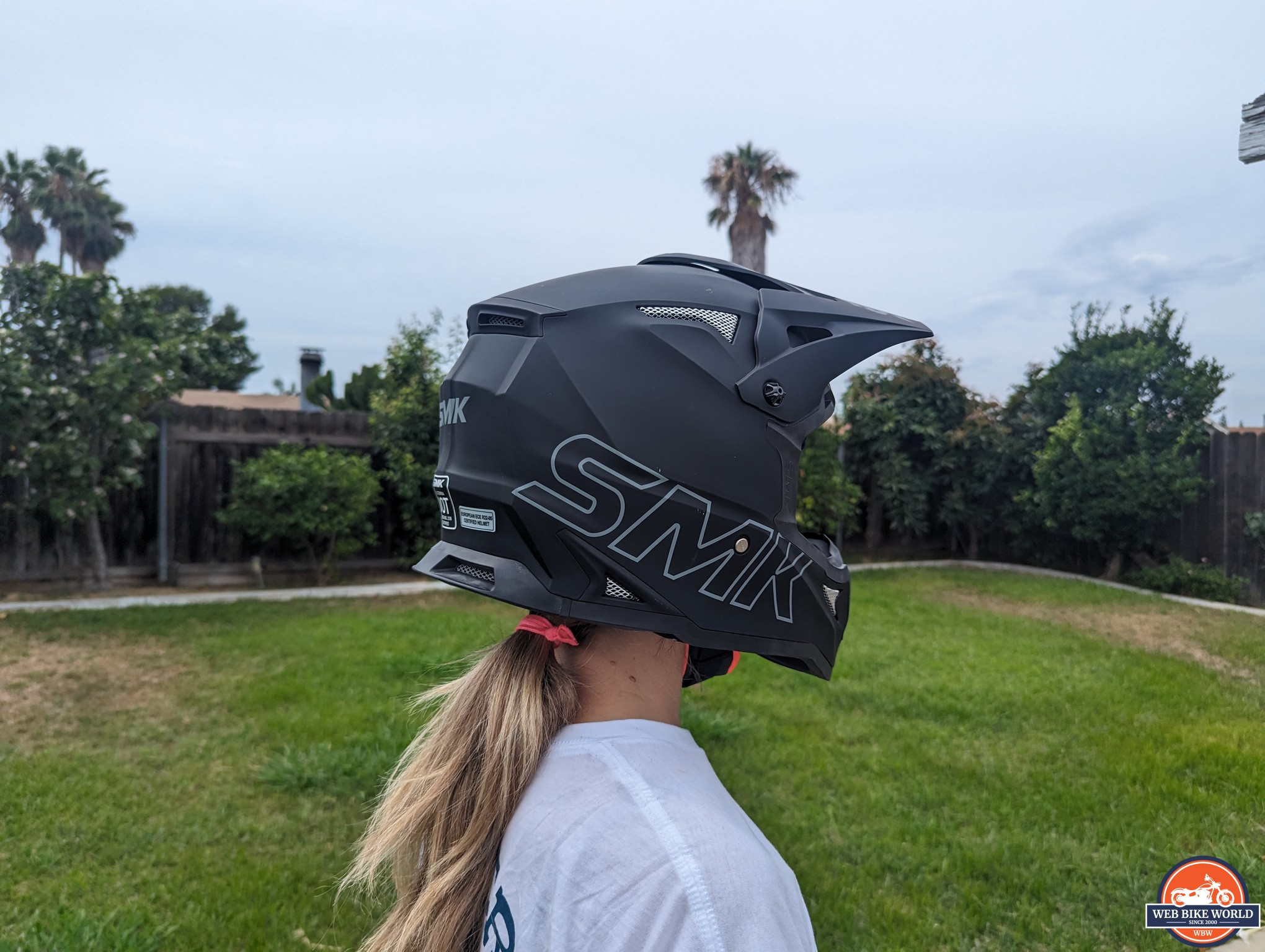
Our main critique would be having a filter on the front chin vent. A dirt stash is a telling sign of adventure, but that doesn’t mean we want to inhale every particle from a dustout. There is a big enough gap in the chin that some kind of filtration could be added on, and the vents are made for a human and not an ant.
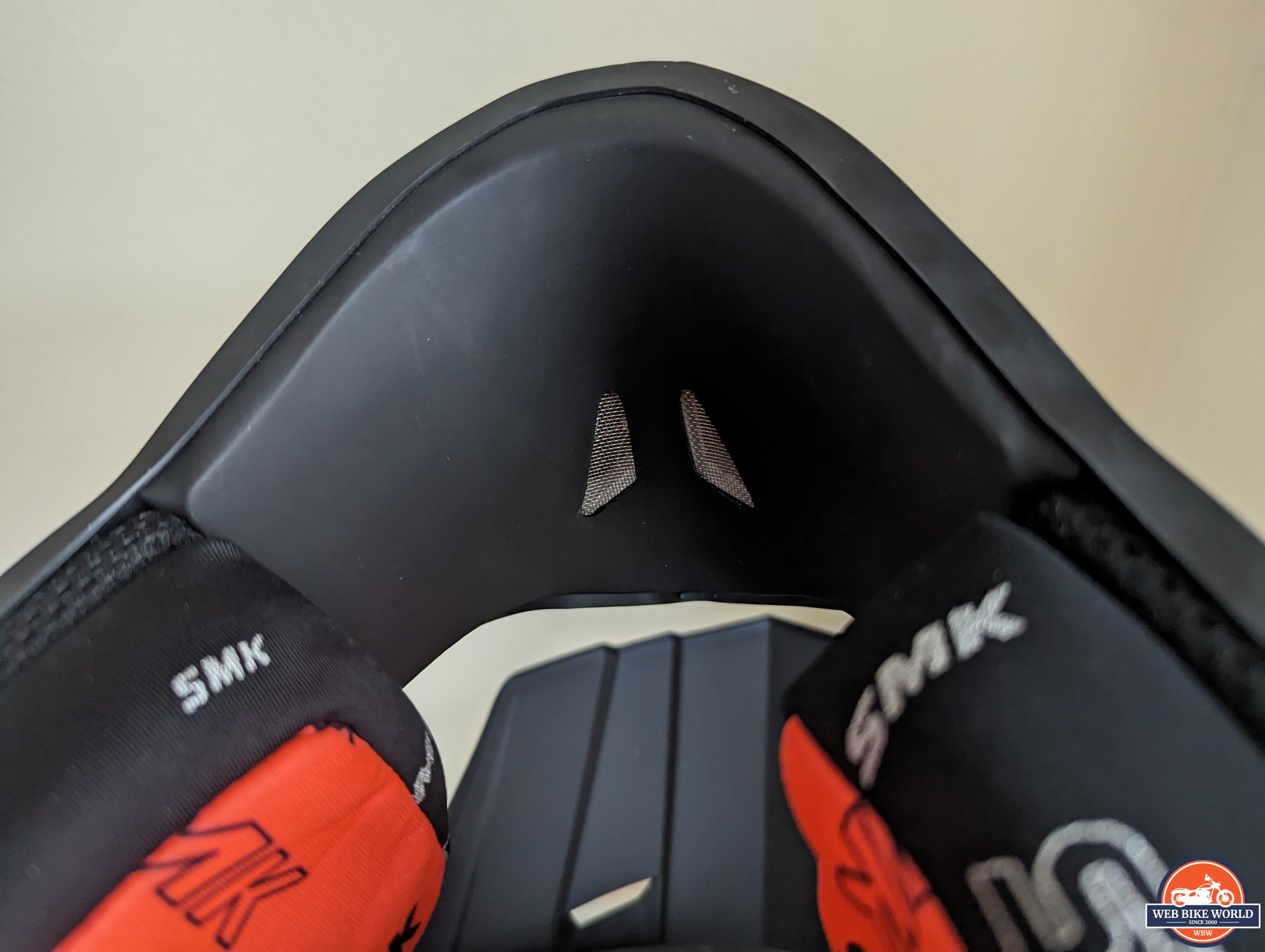
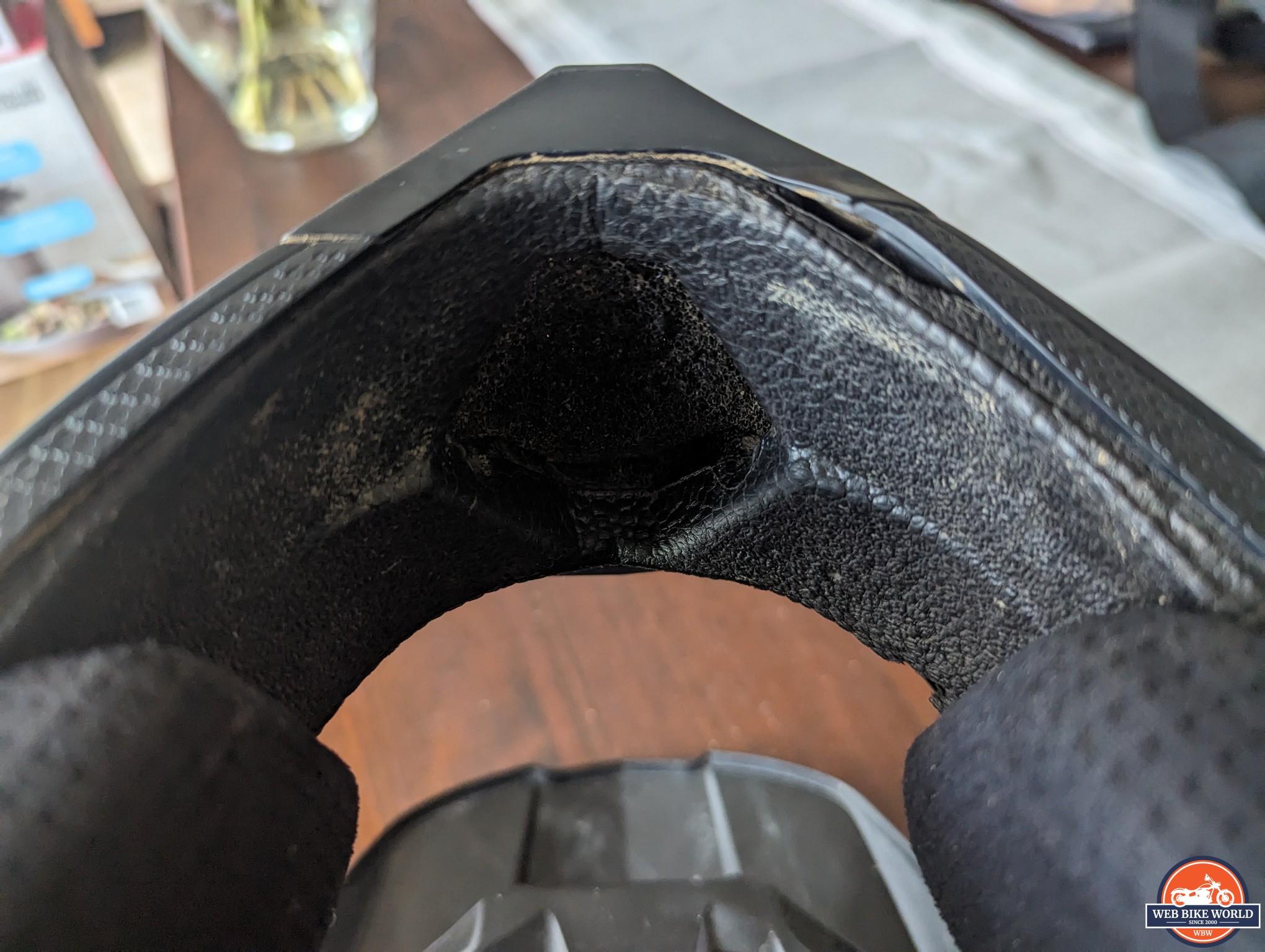
Design and Colorways
Though our coverage is of the Alltrerra, this helmet comes in various other colors and art schemes. This one shows a classic take on solid colors, obviously titled Allterra Solid. There are also the Allterra Smiley, Allterra Tribou, Allterra Fulmine, and the Allterra Slope. There is a great collection of styles to suit your look, but it’s almost unnecessary since none of them have additional features for the helmet itself.
The Allterra Solid is offered in seven different colors and six different sizes. You can pick your runway look here Off Road helmets.
Riding vs. Writing
We can type shop helmets all day, but it comes down to the impression I get when I’m on a bike with it.
Sometimes breaking down the features is not enough, and experiencing them gives us the go-ahead to tell readers if a product is worth their time. So I spent the day with SMK and followed through in true California fashion by doing it on a ridiculously hot day.
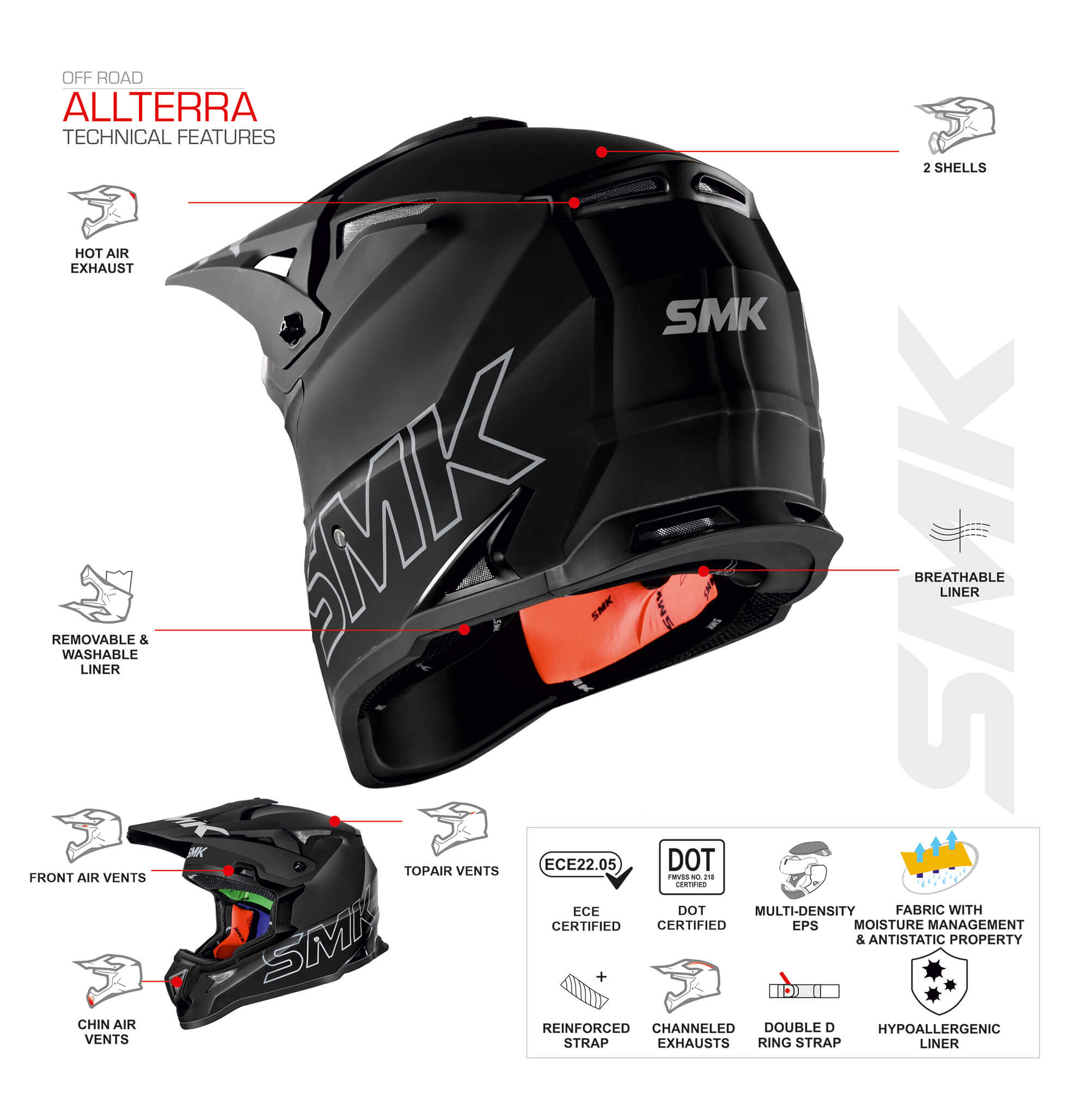
Here are the takeaways:
This helmet feels like I don’t have it on. It was seemingly a good thing until I hit a branch on a single track and felt everything. A quick one that extended across from my narrow trail as I was turning right. It wacked the right side of the SMK helmet and extended a slap of leaves on my goggles. I could feel the helmet shift slightly, and my head whipped back. It didn’t stop me, but I did slow down to check myself and adjust the helmet. I can remember the brief hollow ricochet through the helmet. In addition to all that, I still felt safe.
But I wasn’t overheating, panting in my helmet, or drenching my cheek pads in sweat. When I rode, it felt like the breeze was INSIDE the helmet, and it was easy to take off and on. In short, it did the job, but was it the best? No. The lining was a bit scratchy and felt thin, and the shape was longer than average, and when the branch did hit, it rocked me. The price is attractive until you have to put the risk in during a ride. However, if you’re getting into riding and need something quick, certified, and fits, this is an option; maybe not the best, but something to try.
The Final Verdict?
If you walked into my house, you’d probably assume I only pick the most expensive and luxurious gear brands, but that’s not the case. I still shop at Walmart and Amazon, and I’m okay with grocery store-brand milk. Gear doesn’t have to be expensive to have high quality and safety, but there is a fine line for it.
Alright, let’s break it down. First, that price point is quite wallet-friendly, which is a plus and makes it an attractive option for budget-conscious consumers. Ventilation is a strong suit, ensuring comfort during wear so you won’t sweat bullets. It’s also got a manageable weight that makes it an easy accessory. But it is worth mentioning that this helmet does raise concerns regarding its safety features, particularly with the questionable lining material and less-than-ideal shell composition. We like EMT emergency straps because we like features that ensure a rider gets help in any fashion. Also, designing a shell with more durability is always a good investment for riders and companies alike. We’d like to see more thought given to the type of shell materials, not just having a stamp of DOT approval. Staying relative in the helmet world means pitching your product against the best and meeting it in the middle of an achievable price range. We’d like to see a level up to the features the Allterra boosts, regardless of the price increases. There is a way to make things affordable and still worth their weight.
So, while it’s not the knight in shining armor of helmets, it is pretty readily available on the market and at a price most can manage, so there are a few aces in the deck. Just be sure to weigh those against its drawbacks before making your call.
Pros
- Hypoallergenic pads
- Moisture-wicking fabric
- A multitude of air vents for cooling
- Reasonably Lightweight
- Double D ring reinforced chin strap
- Adjustable visor
- Affordably priced
- DOT and ECE certified
Cons
- Bulkier design
- Thin inner lining lacking durability
- D ring magnet is weak and filmy
- Chin vent lacks a filter and large opening.
- Not carbon Fiber
- Shell composition weak
- Limited safety tested
- No EMT straps


